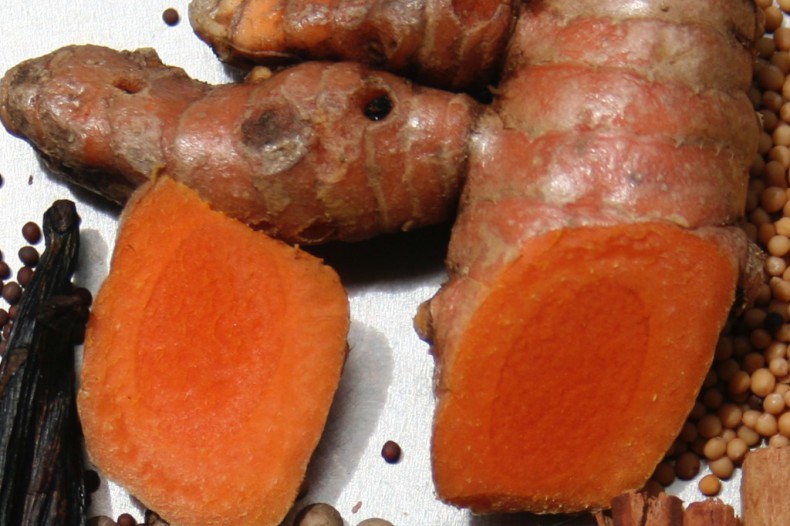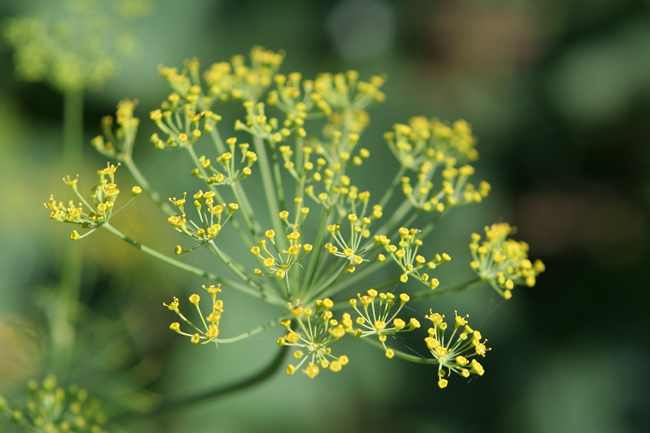Known in India as grandmother’s herb the root of this ‘cure all’ plant is antiseptic and astringent. Turmeric is a herbaceous perennial that grows from the characteristic orange yellow rhizome with broad oblong leaves. It thrives in tropical and sub-tropical regions planted into well-drained humus-rich soils in autumn. In cooler regions plant into large pots, full of composty soil and sit the pot in a sunny position where it will receive almost no water during late autumn, winter and early spring, but make sure it gets plenty of water once the weather warms up. Turmeric is a heavy feeder so top up with compost or manures or blood and bone every few weeks once it starts vigorously growing in spring. Read more
Dill, Anethum graveolens, is a delightful tall annual herb that grows to about 1 m from a taproot, with a single stem and many feathery blue-green leaves and branches. These are topped by groups of umbrella-shaped flower heads made up of small yellow flowers. The flowers are followed by flat, oval, brown seeds, which self-sow readily if left on the plant. Dill is probably one of the oldest medicinal herbs. It was used by the Egyptians before 3000 BC. The name dill is found in several old European languages, reflecting its widespread use, but its derivation is unclear. In medieval times, dill developed a reputation for protecting anyone who carried it against witches. It was a common ingredient in potions and spells and English country brides would wear a sprig of dill on their wedding day, while in Germany, a bride would put dill and salt in her shoes to bring her good luck. By the beginning of the seventeenth century dill was grown in many countries all over the world because it was known as ‘a gallant expeller of wind’. Read more


